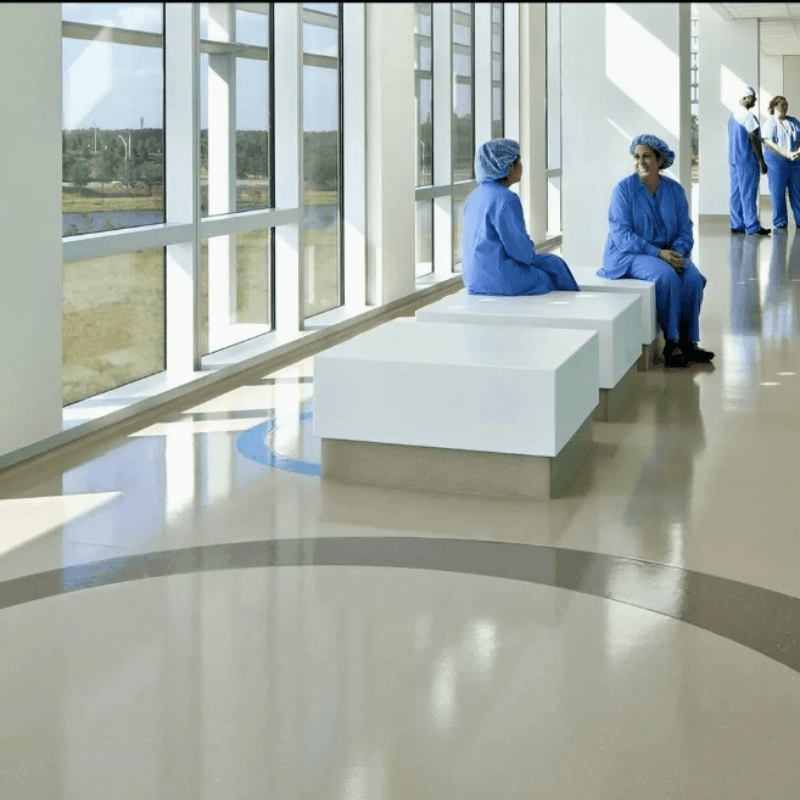Hospital floors are far more than just surfaces to walk on. They are an integral part of the healthcare infrastructure, playing a pivotal role in patient care, staff efficiency, and the overall functionality of a medical facility. From the moment a patient enters the hospital to the time they are discharged, the floors they encounter can significantly impact their experience and well-being.

The Significance of Hospital Floors
Patient Safety and Comfort
Patient safety is of utmost importance in any hospital. Slip-resistant floors are essential to prevent falls, which can have serious consequences for patients, especially those who are already vulnerable due to illness or injury. Additionally, floors that are easy to clean and maintain a high level of hygiene help reduce the risk of infections, which is crucial in a healthcare setting. Comfort is also a factor, as floors with some level of cushioning can make it easier for patients to move around, especially those who are on foot for extended periods.
Durable,Improve staff efficiency
Hospital staff are constantly on the move, pushing equipment, transporting patients, and rushing to attend to emergencies. Floors that can withstand heavy foot traffic and the rolling of equipment are necessary to ensure smooth operations. Durable floors also reduce the need for frequent repairs and replacements, minimizing disruptions to the daily activities of the hospital. Moreover, floors that are designed to be quiet can help create a more peaceful environment, allowing staff to focus better on their work.
Infection Control
Hospitals are breeding grounds for various pathogens, and preventing the spread of infections is a top priority. Flooring materials that are resistant to bacteria, viruses, and fungi are vital. These materials should be non-porous and easy to disinfect, ensuring that any potential sources of infection can be quickly eliminated. In areas such as operating rooms, intensive care units, and isolation wards, the choice of flooring can make a significant difference in preventing the transmission of harmful microorganisms.
The hospital floor has so many advantages, and the most important point is that its cleaning and maintenance is also very convenient, about the cleaning and maintenance methods,there are the following points
1,Regular Cleaning
Regular cleaning is essential to keep hospital floors in good condition and free from dirt, dust, and pathogens. Different flooring materials require different cleaning methods. For example, resilient flooring can be cleaned with a damp mop and a suitable cleaner, while carpets may need to be vacuumed regularly and deep-cleaned periodically. It’s important to follow the manufacturer’s guidelines for cleaning to avoid damaging the floors.
2,Disinfection
In addition to regular cleaning, hospital floors need to be disinfected regularly, especially in high-risk areas. Disinfectants should be chosen based on their effectiveness against the types of pathogens commonly found in hospitals. Special attention should be paid to areas where spills occur frequently, such as in cafeterias and laboratories.
3,Repair and Replacement
Over time, hospital floors may become damaged due to wear and tear. Prompt repair of any cracks, chips, or other damage is important to prevent further deterioration and to maintain safety. In some cases, when the damage is extensive, replacement of the flooring may be necessary. It’s important to plan for these repairs and replacements in advance to minimize disruptions to hospital operations.
In conclusion, hospital floors are a critical component of the healthcare environment. The choice of flooring materials, the design of the floors, and their maintenance all play important roles in ensuring patient safety, comfort, and the efficient operation of the hospital. By carefully considering these factors, hospitals can create floors that are not only functional but also contribute to a positive healing environment.



